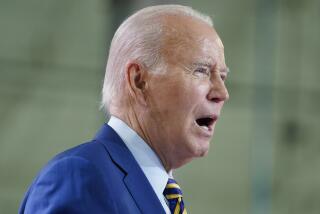Clinton’s Health Plan : Health Plan: A User’s Guide : Perspectives
- Share via
More data and details on the push for health reform:
* In 1900, only 41 out of 100 Americans lived to age 65. Today 79 out of 100 live that long.
* People who reach age 65 have a 30% to 50% chance of spending some time in a nursing home before they die.
* Current average annual cost of nursing home care: $22,000.
* Average annual cost in 30 years under current conditions: $55,000.
* Paperwork generated by each stay in a hospital or visit to a doctor accounts for up to 20 cents of every health care dollar. It could cost an estimated $800 million to convert to a simplified system. The President is proposing a single claim form, shown above.
* Fewer than one in three U.S. doctors practice as generalists, compared to 50% to 70% in other industrialized countries.
* Highest-paid specialties for U.S. doctors in 1990:
Surgery: $236,400
Radiology: $219,400
* Lowest-paid fields for U.S. doctors in 1990:
General/family practice: $102,700
Pediatrics: $106,500
* Infant mortality rate in U.S.:
10.4 per 1,000 births.
* Infant mortality rate in Japan:
5.2 per 1,000 births.
* Prescription drugs represent the largest single out-of-pocket expense for three out of four older Americans.
*President Clinton’s optimistic projection for approving and implementing his plan:
Enact bill: December, 1993
National board in place: April, 1994
First states enter system: January, 1995
Last states: January, 1997
CLOSING QUOTES
“A hospital ought to be a house of healing, not a monument to paperwork and bureaucracy.”
“For the first time in this century, leaders of both political parties have joined together around the principle of providing universal comprehensive health care. It is a magic moment, and we must seize it.”
“This health care system of ours is badly broken, and it is time to fix it.”
--President Clinton, in Wednesday’s speech
“This bill is asking the American taxpayer to trust government to manage a trillion dollars. We don’t.”
--Michael Bromberg, executive director of the Federation of American Health Systems, whichrepresents 1,400 hospitals
Sources: Congressional Budget Office; American Medical Assn.; Families USA, Robert Wood Johnson; Labor Department; White House; Brookings Institution; the Universal Almanac; University of Michigan; Reuters.
More to Read
Sign up for Essential California
The most important California stories and recommendations in your inbox every morning.
You may occasionally receive promotional content from the Los Angeles Times.













